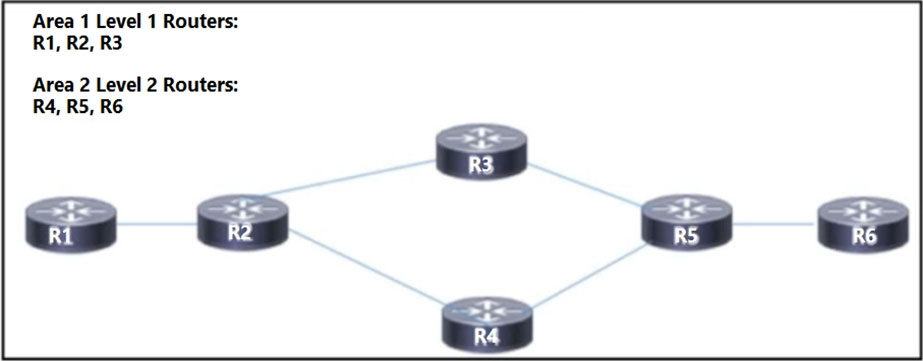
Refer to the exhibit. A network engineer is in the process of implementing IS -IS Area 1 and Area 2 on this network to segregate traffic between different segments of the network. The hosts in the two new areas must maintain the ability to communicate with one another in both directions. Which additional change must be applied?